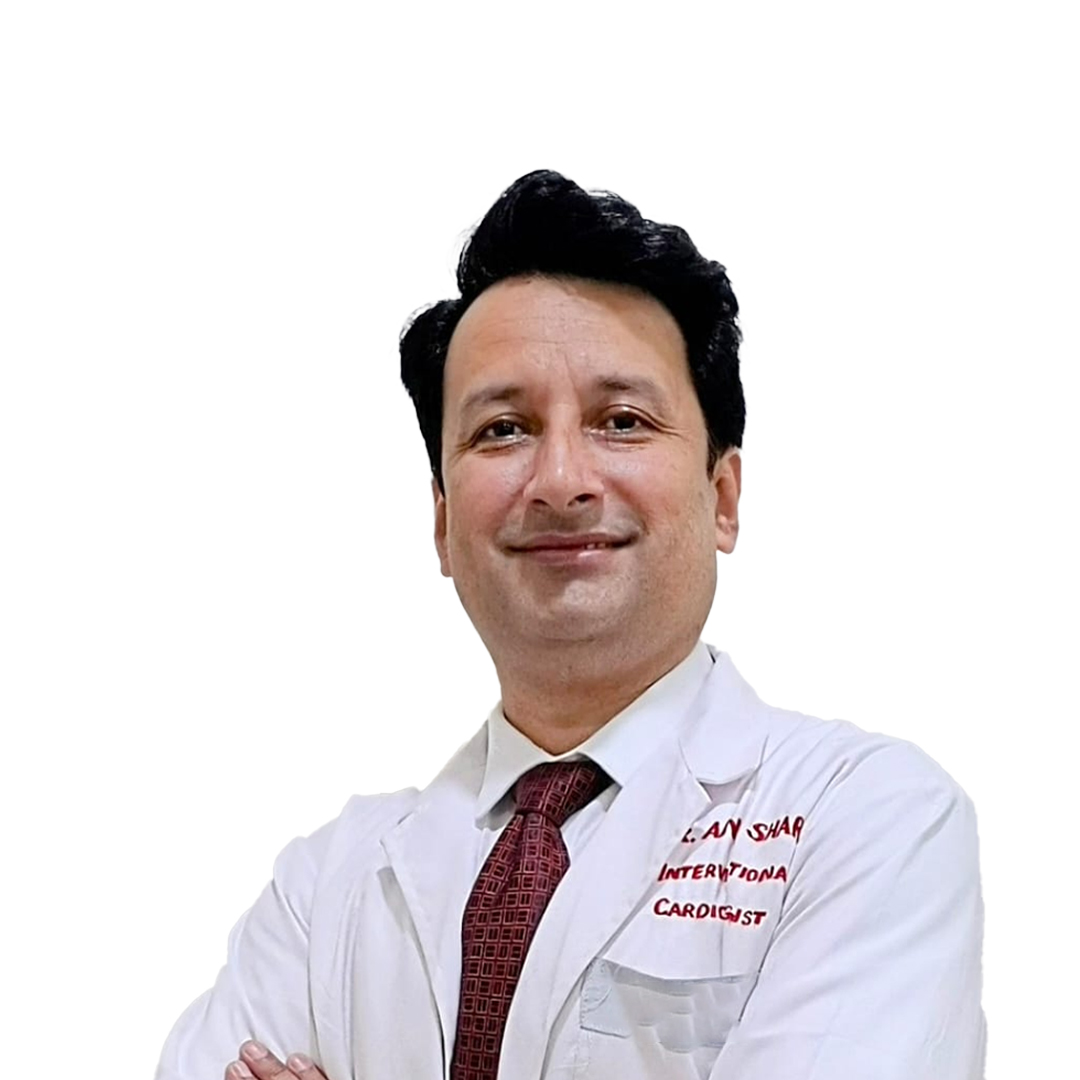Left Ventricular Assist Devices (LVAD) - Heart Pump Machine

Treatment Duration
3 Hours
------ To ------4 Hours
Treatment Cost
₹ 7,00,000
------ To ------₹ 10,00,000

Table of Contents
- Working of Left Ventricular Assist Devices
- Conditions treated with Left Ventricular Assist Device
- How is Left Ventricular Assist Devices Surgery performed?
- What to expect before and on the day of Left Ventricular Assist Devices Surgery?
- What Can You Expect After Left Ventricular Device Surgery?
- Benefits of Left Ventricular Assist Devices
- Risks and Complications of Left Ventricular Assist Devices
An LVAD (Left Ventricular Assist Device) is a device that helps pump blood out of the left heart or ventricle to the rest of your body. This mechanical pump is implanted in patients with heart failure. A controller and battery pack are worn outside the body and connected to the LVAD through a small port in the skin. Implanting an LVAD often requires an open-heart surgery that has some serious risks.
| Procedure Name | Left Ventricular Assist Device |
| Alternative Name | Mechanical Circulatory Support Device |
| Conditions Treated | Heart Failure |
| Benefits of Surgery |
Improved quality of life, Greater life expectancy, Lower the symptoms of heart failure |
| Treated By | Cardiologist |
You can check Lvad Surgery Cost here.
Working of Left Ventricular Assist Devices
There are different types of LVADs used during open-heart surgery. The parts of the LVADs may vary based on the type of device used, but the four main parts include:
- The pump is placed into the chest, in the apex of the heart, where it receives blood from the left ventricle. A tube then supplies this blood from the device to the aorta.
- The pump is connected to a cable (driveline) and a controller.
- The cable passes from the device through the skin in your abdomen (belly) and reaches the controller and batteries outside your body.
- The controller, a small computer, runs the pump and provides alarms and messages to assist you in operating the system.
- The batteries provide a power supply when the system is not plugged into an outlet.
Types of LVADs
The different types of LVADs include:
- Heartmate 2: The pump is implanted into the apex of the heart under the muscle layers of the abdomen. It is USFDA approved and used for destination and bridge-to-transplant therapy.
- Heartmate 3: The circular pump is implanted into the apex of the heart. It is an FDA-approved LVAD for destination and bridge-to-transplant therapy.
- Heartware HVAD: Like heartmate, Heartware HVAD is FDA approved for destination and bridge-to-transplant therapy. The pump of Heartware HVAD is implanted into the apex of the heart, and the controller requires two power sources at all times.
Does LVAD Take the Place of the Heart?
- No, an LVAD does not replace the heart. The mechanical pump receives blood from the left ventricle and supplies it to the aorta. It pumps along with your own heart.
Lvad Surgery Videos by HexaHealth
Expert Doctors (10)
NABH Accredited Hospitals (10)


Conditions treated with Left Ventricular Assist Device
You may need an LVAD in the following situations:
- Bridge to transplant (waiting for a heart transplant): The doctor may recommend getting an LVAD if you’re waiting for the availability of a donor’s heart. An LVAD keeps pumping blood through your body even when you have a diseased heart. Your doctor will remove the device when you receive a heart transplant.
- Destination therapy (when you can’t have a heart transplant due to age or other factors): Doctors use LVADs as a permanent treatment for heart failure patients who are not the ideal candidates for a heart transplant. Long-term LVAD therapy can support your heart function and improve your quality of life if you have heart failure.
- Bridge to recovery (temporary heart failure): In the case of a temporary heart failure, your doctor may recommend getting an LVAD until your heart becomes healthy enough to pump blood on its own.
How is Left Ventricular Assist Devices Surgery performed?
- The anaesthesiologist will give you general anaesthesia to make you sleep during the entire procedure.
- The surgeon will incise the centre of your chest and open the chest bone (sternum) to reach your heart and place the device.
- He/she may use a heart-lung bypass machine to keep oxygen-rich blood circulating throughout the body during the procedure.
- He/she connects one end of the LVAD tube to the heart’s left ventricle and the other end to the aorta. A driveline exits from the upper belly and is connected to a battery (power supply) and a computer (controller) to operate the device.
- After the surgeon implants the LVAD in its place and it starts working properly, the heart-lung bypass machine is removed, and LVAD starts pumping blood.
- Finally, the surgeon closes the incision with stitches.
What to expect before and on the day of Left Ventricular Assist Devices Surgery?
Before the Surgery
- Before the surgery, your doctor will advise you for a pre-anaesthetic checkup.
- Most often, you are admitted to the hospital a few days before the procedure to conduct diagnostic tests and ensure that you are an ideal candidate for getting an LVAD.
- The diagnostic tests before LVAD surgery include blood tests, ECG, echocardiogram, chest X-ray, and cardiac catheterization.
- The doctor will inform you to stop eating or drinking several hours before the surgery.
- Your doctor will also review your current medications and inform you if you can take them on the day of the surgery.
- He/she will briefly explain the procedure, the risks of the surgery, the estimated cost, and the insurance formalities.
- You can ask your queries and concerns to your doctor regarding the surgery.
On the Day of the Surgery
- You will be asked to sign consent formalities, giving your permission for the surgery.
- The staff will inform you about the change of clothes and removal of dentures, contact lenses, jewellery, and nail polish.
- A nurse will shave the hair on your chest before the procedure.
- The doctor will record your last meal, monitor your vitals, and shift you to the OT room.
During the Surgery
- In the OT room, you will be made to relax on the operating table.
- The medical team will start an IV line for fluids and medicines in your arm or hand.
- The anaesthesiologist will give you general anaesthesia to put you to sleep.
- The team will connect you to a ventilator to help you breathe during the surgery.
- Your vitals like blood pressure, breathing, and heart rate will be monitored throughout the procedure.
- The nurse will clean the surgical site with an antiseptic solution.
- Next, your heart surgeon will make an incision in your chest and perform the surgery.
- After the LVAD is inserted into its place, the heart-lung bypass machine will be removed, and the skin will be closed with stitches.
- The complete procedure takes around 4-6 hours.
What Can You Expect After Left Ventricular Device Surgery?
After the LVAD implant surgery
- The team will shift you to an intensive care unit (ICU).
- While in the ICU, the team will closely monitor your condition for any complications.
- The nurse will give you fluids and medications through an IV.
- The doctor will insert tubes to drain urine from your bladder and tubes to drain blood and other fluids around the heart and chest.
- You will be given antibiotics to prevent infections and blood-thinning medications to prevent blood clots.
- You may need to remain on a ventilator for a few days after the surgery until you can breathe on your own.
- After spending some days in the ICU, the team will shift you to a hospital room.
- A physical therapist and a nurse will help you sit up, get out of bed, and walk to make you stronger and more active before leaving the hospital.
- Based on your recovery, you’ll be discharged from the hospital after 14-21 days.
- Before discharge, your doctor will offer home care instructions regarding the incision site, showering, travelling, stress and anxiety, and returning to normal activities.
- Your doctor may also recommend a short stay at the cardiac rehabilitation centre to help you adopt healthy lifestyle changes.
At-Home Care
- You will need an upper arm blood pressure cuff, scale, and thermometer.
- You will be asked to chart your blood pressure, weight, temperature, and LVAD data daily and report the findings to your LVAD team.
- Make sure to take the measurements at the same time every day.
- Wear the same amount of clothes every day while taking your weight.
Life After LVAD
It is critical to make some lifestyle changes after the LVAD implant, which include:
- Quit tobacco
- Stop drinking alcohol
- Eat a healthy diet recommended by your healthcare team
- Exercise regularly
- Do not use illegal drugs
You should also take some precautions after the LVAD implant, including:
- Ensure having an adequate electrical supply at all times
- Carry extra supplies
- Protect the cables connected to your controller
- Protect the driveline
- Do not use pools or tubs
- No MRI
- Follow-Up Appointments
- You will most likely have weekly checkups with your healthcare provider for the first month after your LVAD implant surgery. The doctor may perform special tests to check your blood pressure and heartbeat during these visits. As you recover from the surgery, you’ll need monthly visits to ensure that your LVAD is working properly.
Benefits of Left Ventricular Assist Devices
An LVAD improves the blood flow to the body and improves the functions of the brain, liver, kidneys, and other body organs, thereby improving the patient’s ability to participate in Cardiac Rehabilitation Program. The other benefits of LVAD include:
- Improved quality of life
- Greater life expectancy
- Lower the symptoms of heart failure
What is the Life of an LVAD?
The amount of time an LVAD supports you vary depending on the type of LVAD used and the indication of LVAD. While the newest LVADs are designed to last a few years, it cannot be known for certain how many years they can support the patient. Some patients may stay alive with an LVAD for more than five and a half years. In some cases, patients have even survived up to 13 years.
How is LVAD Different from Pacemaker, CRT-D and ECMO?
- While an LVAD is used to help the heart pump blood effectively, a pacemaker is used to correct irregular heartbeat (arrhythmia). Like a pacemaker, a CRT-D also treats slow heart rhythms. Additionally, it delivers small electrical impulses to help the left and right ventricles contract simultaneously.
- While ECMO is similar to LVAD, the ECMO machine pumps blood from the body to an artificial lung that adds oxygen and removes carbon dioxide from the blood. However, an LVAD pumps blood by receiving blood from the left ventricle and delivering it to the aorta.
Risks and Complications of Left Ventricular Assist Devices
LVAD surgery has some serious complications. Some of the common risks include:
- Bleeding
- Blood clots, causing stroke or heart attack
- Infection
- Right heart failure
- Kidney injury
- Device malfunction
When is consultation with the doctor needed?
Call your healthcare professional if you experience the following symptoms:
- High fever
- Incision opens
- Drainage from the incision
- Redness around the incision
- Feeling depressed or overwhelmed
Last Updated on: 7 November 2023
Author
HexaHealth Care Team
HexaHealth Care Team brings you medical content covering many important conditions, procedures falling under different medical specialities. The content published is thoroughly reviewed by our panel of qualified doctors for its accuracy and relevance.
Other Treatments in Your City































